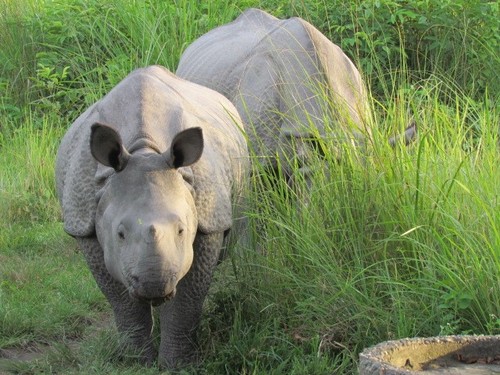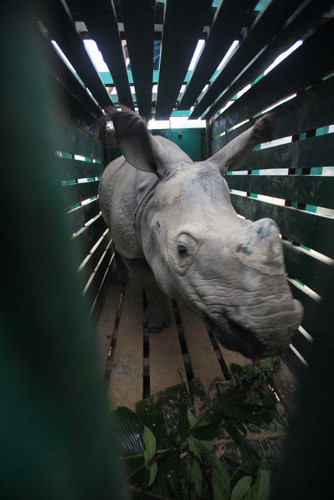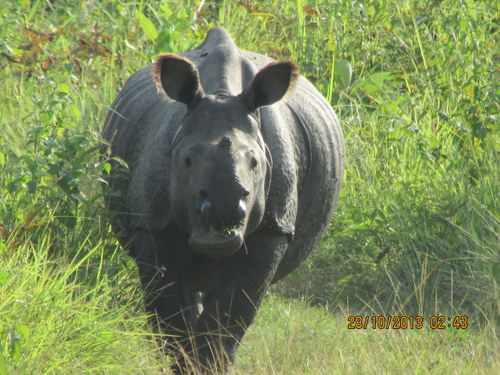Rescuing and rehabilitating endangered greater one-horned rhinos in Assam
Assam, September 22, 2014: Rhino rehabilitation in Assam is one of the major tasks undertaken by International Fund for Animal Welfare-Wildlife Trust of India (IFAW-WTI). Through establishment and operation of the Center for Wildlife Rehabilitation and Conservation (CWRC), orphaned rhino calves are admitted for hand-raising and subsequent rehabilitation. The calves spend around 2-3 years at CWRC where they are hand-raised, screened for diseases and fit with radio transmitters before being taken to the acclimatization site at Manas National Park, Assam. The rhinos are allowed to be on their own in large ‘Boma’ during the acclimatization period in order to develop fidelity to the site. At the end of around one year, the rhinos are let out and allowed to disperse, while being monitored through radio telemetry. Radio telemetry also provides opportunities to observe and document interactions with wild rhinos apart from determining habitat use and home ranges.
Since the commencement of wildlife rescue operations in Assam, five hand-raised greater one-horned rhinos have been reintroduced in Manas National Park and three are being acclimatized to be released next year. Three of the released ones have not only added to the population of Manas by themselves but also contributed to repopulate the park by giving birth to young ones. Three of the females released in 2010 gave birth to young ones, around two years after release. The team of veterinarians and biologists are not only monitoring these young mothers (opportunistically), but also ensuring that the calves survive and consequently re-populate Manas NP. In addition to this, two male rhinos were released in 2013 at Manas NP. One is being actively monitored through radio telemetry. Three more rhinos are currently being acclimatized in the boma at Manas NP and they will be released later this year. At least two of them will be radio-collared before release and monitored for a period of 1-2 years.
Two, rhino calves (one year old) are being hand-raised at Manas NP. They were rescued in 2013 with the male one being rescued after his mother was killed by poachers. The female was rescued when she was swept away in the floods. They are being given artificial milk formula and ad-lib grass. They have gained considerable weight and will be weaned off the milk and shifted to the acclimatization boma the end of this year. Two rhinos are also being hand-raised at CWRC and will be moved to the release site towards the end of year.













